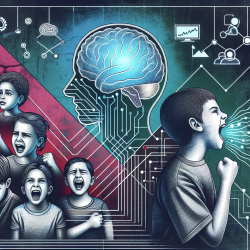In the dynamic field of neuroscience, the concept of brain plasticity is reshaping therapeutic landscapes. The review article "Brain plasticity-based therapeutics" by Merzenich et al. (2014) provides a comprehensive overview of how understanding and leveraging neuroplasticity can lead to groundbreaking therapeutic interventions. As a practitioner, embracing these insights can significantly enhance your therapeutic skills and outcomes.
The Power of Brain Plasticity
Brain plasticity, or neuroplasticity, refers to the brain's ability to reorganize itself by forming new neural connections throughout life. This ability is not confined to childhood but extends into adulthood, offering immense potential for rehabilitation and cognitive enhancement.
Key Principles of Neuroplasticity
The article outlines several principles that govern neuroplasticity:
- The brain is continuously plastic and capable of remodeling at any age.
- Neuroplasticity is regulated by behavioral context and outcomes, particularly in older brains.
- Neuromodulators such as acetylcholine, noradrenaline, and dopamine play crucial roles in enabling and sustaining plastic changes.
- Training can modify various aspects of neural representations, including selectivity, response speed, and accuracy.
- Plastic changes are primarily driven by the strengthening and weakening of synaptic connections.
Implementing Neuroplasticity in Therapeutic Practice
As a practitioner, you can integrate these principles into your therapeutic strategies to enhance outcomes for your clients. Here are some actionable steps:
1. Personalized Training Programs
Develop training programs that are tailored to the individual needs of your clients. Use neuroplasticity principles to design exercises that target specific cognitive and behavioral deficits.
2. Leveraging Technology
Utilize online therapy platforms like TinyEYE to deliver personalized, adaptive training programs. These platforms can provide continuous performance tasks and other exercises designed to enhance attention, memory, and executive functions.
3. Continuous Monitoring and Adaptation
Monitor the progress of your clients regularly and adapt the training programs based on their performance. This ensures that the training remains challenging yet achievable, promoting sustained engagement and improvement.
4. Collaborative Approach
Engage with other professionals and stakeholders, including parents and educators, to create a supportive environment for your clients. Collaborative efforts can amplify the positive impacts of neuroplasticity-based interventions.
Encouraging Further Research
While the principles of neuroplasticity provide a robust foundation for therapeutic interventions, ongoing research is essential to refine and optimize these strategies. Encourage your colleagues and students to delve deeper into this fascinating field. Staying updated with the latest research through conferences, publications, and webinars will ensure that you remain at the forefront of therapeutic advancements.
Conclusion
Embracing the science of brain plasticity can transform your therapeutic practice, enabling you to unlock the full potential of your clients. By integrating personalized training programs, leveraging technology, and fostering a collaborative approach, you can drive significant improvements in cognitive and behavioral outcomes.To read the original research paper, please follow this link:
Brain plasticity-based therapeutics.










